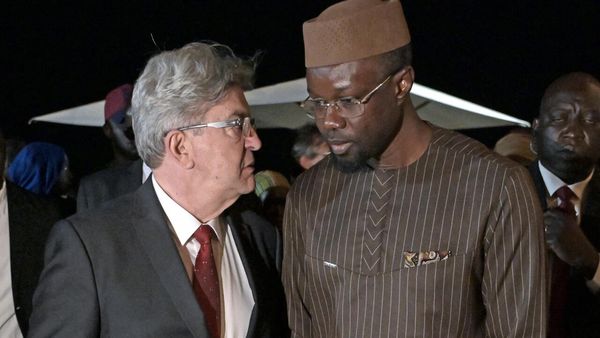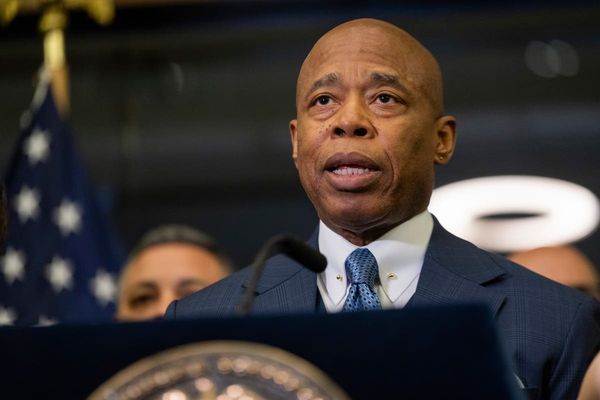
The Twitter Files show that there are two kinds of people in the world — those who have been ingesting a drip-feed of supposed revelations about how an elite Twitter cabal has been working in concert with the government to subvert democracy and silence people based on their political persuasion, and then those who are normal.
If you’re in the latter camp, I’ll try to explain what’s going on.
A few weeks ago, Elon Musk finally bought Twitter and promised to make it into an “inclusive arena for free speech”. A major bugbear of the online right for a while now has been the idea that the old Twitter regime had been censoring conservatives’ speech. Musk, who has been spending his time post-sale responding to right-wing trolls, promised to look into it.
The Twitter Files is a handful of Twitter threads (lingo for consecutive posts read as if one train of thought) from a few handpicked journalists granted access to the company’s internal documents. One of those journalists says they show how staff at the “world’s largest and most influential social media platform” are working together to “manipulate speech” at the behest of “connected actors” before Musk’s takeover.
I’ve read the threads. It’s interesting to me, someone who’s fascinated by the way tech companies decide how to moderate content on their platforms (also known as a “nerd”). I think it does show some intriguing machinations of an important company controlling an influential platform that governments and powerful people have a real interest in trying to manipulate.
The problem is that these documents have been completely misconstrued and decontextualised in a way that makes them deeply misleading to most readers. The Twitter Files promised proof of big tech and the deep state working hand-in-hand to control the public debate. What it actually shows is how Musk’s Twitter is clumsily trying to do the same thing and, in doing so, is harnessing some of the darkest energy of the internet.
I’m not going to go too deep into the Twitter Files because, frankly, they each don’t warrant a line-by-line analysis. If you want that, I recommend reading Techdirt’s Mike Masnick and New York magazine’s Eric Levitz who’ve both done admirable jobs cutting through the spin.
What you need to know is that the files revolve around the idea of content moderation. Whether explicitly or not, we all accept that there’s no true “free speech” online. Platforms such as Twitter, Facebook, TikTok, you name it, promote, demote and remove content to improve the user experience. This is content moderation.
Removing spam accounts that direct-message you offering you part-time work at Amazon? That’s content moderation. Hardcore pornography posted to your neighbourhood Facebook group? Not OK, according to Facebook’s content moderation policies. Kanye posting swastikas after praising Hitler and making anti-Semitic comments? That got him banned, which is content moderation in action.
Those are pretty uncontroversial but technically do limit speech. Every day these platforms have to do content moderation at scale, for millions of posts every day, in hundreds of languages, on high-profile accounts and on fringe or novel posts. It’s thankless work, typically. When it goes well, users don’t notice. When it doesn’t — well, this is what happens.
A behind-the-scenes look
The Twitter Files purport to show what happened behind the scenes in a couple of high-profile content moderation cases. One edition looks at Twitter’s internal discussion around the decision to block links to a New York Post article about Hunter Biden’s laptop because of the platform’s pre-existing policy to ban “hacked materials” (a decision that was overturned no more than 24 hours later!). Another reveals the content moderation tools and how they’ve been used to limit the accounts of conservative figures and politicians. The final one has been about the decision to ban Donald Trump after he directly incited violence on the platform including the deadly January 6 2021 Capitol riots.
Like I said before, seeing how these decisions were mooted by Twitter’s employees is fun reading to me. It’s certainly newsworthy. But it is far from the earth-shattering bombshells promised. In fact, nothing revealed is particularly new to anyone who’s read the tech press and Twitter’s public statements over the past few years. Claims of “censorship” and “shadow-banning” are just Twitter deciding to limit the reach of accounts that’ve broken the rules, as it has been publicly saying for years it would do. And the cherry on top? Musk said that’s exactly what his Twitter is planning to do, too!
Taking a step back, the real story of the Twitter Files is that Musk — or someone on his behalf — has selected a few reporters (notably, none of them tech reporters and all with clear ideological bent) to pick through Twitter’s documents and piece together “proof” of what they already believed existed. He’s given them access to Twitter’s internal Slack messages and the company’s content moderation tools. The journalists have unusually published their “findings” entirely on Twitter. One even said he had agreed to certain terms about these threads, but hasn’t said what those were.
Compare the Twitter Files to The Wall Street Journal’s Facebook Files, which used beat reporters to break stories based on a cache of documents that were eventually shared with other outlets, and you’ll get a sense of just how far the Twitter Files are from journalistic best practice.
What’s perhaps more telling is what these journalists haven’t proven. Even with access that most reporters could only dream of, they haven’t shown evidence the US government ordered the removal of content or accounts for political reasons or that Twitter acquiesced. They haven’t shown that conservative accounts were specifically targeted with harsher treatment (ironically, they unwittingly showed evidence of the contrary). Absence of evidence isn’t evidence, but it does take the wind out of the sails of claims that Twitter was systematically putting its finger on the scale.
‘Breathless, paranoid, almost conspiratorial tweets’
This leads us to the most troubling aspect of the Twitter Files so far: how it’s turned from a supposed accountability measure into a QAnon-style conspiracy.
To hype up the relatively meagre findings, the journalists accompanied scattered screenshots of Twitter’s internal discussions with breathless, paranoid, almost conspiratorial tweets. This vibe has seeped into the countless tweets from outraged conservative figures and fringe right-wing media outlets that have treated it like a digital Watergate or, more accurately due to the lack of substance, a sprawling conspiracy.
Musk fans eagerly await each edition — not unlike Q’s drops. As reported by WIRED, actual conspiracy theorists are particularly excited by the threads. Like QAnon’s obsession with children being sacrificed, children’s sexual exploitation has become a key part of the Twitter Files discourse (even though there’s no reference to the matter in any of the original Twitter Files material).
People responding to the Twitter Files have also begun doing “research” on people named in them. The online swarm discovered that US chief presidential medical adviser Anthony Fauci’s daughter works at Twitter. Former FBI lawyer Jim Baker was the deputy general counsel at Twitter. Twitter’s former safety executive Yoel Roth shared an article in 2010 asking whether high school students can consent to having sex with their teachers. (It concluded they cannot.)
The implication from these connections is that there’s a secret group of connected elites who are controlling everything. But it’s just inference and hints and clues and dog whistles. It’s digital red string on a pinboard. All fall short of showing anything untoward because, despite having the world’s richest man on their side and access to every possible piece of proof, there’s no grand conspiracy to find.
No stranger to conspiracy theories, Musk has been indulging the most fringe, QAnon-esque parts of the Twitter Files by promoting it to his 115 million followers. It goes without saying that it’s not a great development when Musk, one of the world’s most powerful people, endorses a conspiracy theory that paints his enemies as evil child abusers.
At best, the Twitter Files is a hit job against the old Twitter management completed by a handful of journalists with seemingly no prior knowledge of how the platform works. They had a narrative going in and it just so happened they found some evidence that “proved” it.
At worst, this is a billionaire’s sponsored content for a platform that he desperately needs to make popular and profitable. He’s tapping into one of the most dangerous energies of the internet — toxic, even conspiratorial fandom — to power a narrative that Musk is Twitter’s great salvation.
But in the end, the Twitter Files is just an ad for Twitter.
Are you done with Twitter now? Or can you smugly say you were never there? Let us know by writing to letters@crikey.com.au. Please include your full name to be considered for publication. We reserve the right to edit for length and clarity.







